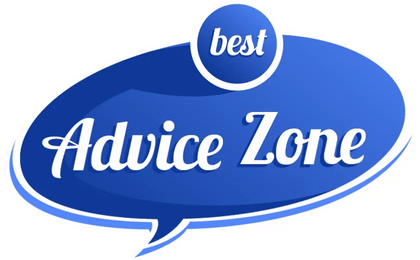Overview
Selective mutism is a severe form of anxiety that starts in childhood and renders a person unable to speak fluently in social settings. Symptoms can vary amongst individuals, from being able to speak to their family at home but struggling to talk at school, other than odd words or whispers or through another person, to being unable to speak at all. It’s not that a person with selective mutism is refusing to talk it’s that they find themselves unable to do so.
The condition is relatively rare affecting around one percent of children over the age of five. It is twice as likely to affect females than males and is rare in adults unless it went untreated when they were a child or in other specific circumstances. It’s believed that over seventy percent of children with selective mutism will have social anxiety disorder.
Causes of selective mutism
Researchers agree that there is no known single cause for the condition and that its occurrence is more likely because of a combination of factors, which can include:
· Having a fluency disorder (speech or language problems) or learning disorders can be a contributary factor
· It’s also believed that there may be a genetic predisposition to selective mutism and so children that have a family member with the condition may be more likely to develop it
· If they suffered childhood trauma or abuse or they had parents with poor parenting skills
· Have problems with processing sound
· Having a fear or phobia about speaking
· Were bullied as a child
· Moved to a country where they speak a different language
Children with selective mutism will often have shown signs of things like sleep issues, moodiness, inflexibility excessive crying, tantrums and shyness from being an infant. Whilst they are not necessarily the cause of selective mutism, there is a strong connection to the following mental health conditions so having any one of these could put you at greater risk of developing the condition.
· Anxiety
· Autism spectrum disorder
· Other anxiety disorders
· Phobias
· Post-traumatic stress disorder
· Separation anxiety
· Social anxiety disorder
Symptoms of selective mutism
Symptoms of selective mutism can vary, as it only happens in certain circumstances, and some people can communicate with certain limitations whilst others can find it almost impossible to speak. Common signs and symptoms can include:
· Being shy or fearful when they are around people that they don’t know
· In children being reluctant to speak most commonly when they are between the ages of two and four years old
· Looking like they want to speak to you but they stop themselves because they feel either too anxious, afraid or embarrassed to try
· Refusing to speak unless they can do so through someone that they trust or are very close too
· Children can show signs of being clingy, sulky, withdrawn, disinterested or rude
· Have an inability to speak when they are either at school or find themselves in a social situation
· Not asking to go to the toilet at school which can lead to children wetting themselves
· Whilst they can communicate verbally at home or when they are with their family or friends, but not when they are at school or in social gathering
· Disruptive behaviour, or temper tantrums as a way to avoid speaking
· Struggling to make eye contact
· Look like an animal caught in headlights frozen and unable to move
· Are prone to fidget and show signs of nervousness
· Will use as many non-verbal methods to communicate as they can, such as nodding or shaking their head or pointing at things instead of speaking
· Tend to lack facial expressions or movement when they feel anxious or afraid
Associated risks and conditions
The longer selective mutism remains undiagnosed or untreated the more likely it is to cause problems in a person’s later life. It can result in issues with their emotional development as well as affecting their education and academic success. It can also cause them difficulties with their social life and make it harder for them to make friends as well as resulting in:
· Feelings of low self-esteem
· A lack of self-confidence
· Becoming isolated as they withdraw socially
· Problems with their school and education because they refuse to go and their studies and progress is affected
· Symptoms of any pre-existing mental health conditions such as stress, anxiety or depression becoming worse
· Negatively affecting their performance at work
· Drug or alcohol misuse as an emotional support
· Developing depression having suicidal thoughts or attempting to take their own life
· Urinary infections because they feel unable to say they need the toilet and so don’t empty their bladder for long periods of time
Diagnosis
A speech therapist or speech-language pathologist can rule out any underlying dysfluency disorder, and then a mental health provider such as a psychologist or psychiatrist can diagnose selective mutism. To diagnosis selective mutism a patient will have to meet the following five criteria:
· They must have been unable to talk for a period in excess of one month
· Their inability to talk must have affected their educational, work or social life or a combination of the three
· Their inability to speak must not be because the language that they are trying to speak and understand is not their native language
· They consistently struggle or refuse to talk in social settings or at school or work, but are able to communicate at home or with family and friends
· Their speech difficulties are not because they have another form of dysfluency like a stutter or stammer, or because it’s as a result of them having, schizophrenia, autism spectrum disorder or any condition that causes psychosis
Management and treatment
The sooner a child is diagnosed as having selective mutism the more likely they are to be able to manage and overcome the condition. How well treatment works can depend on how long they have had the condition and whether or not they have any other dysfluency issues or learning difficulties. How much support they have from their families and people in the educational services will also play an important part.
Treatment for selective mutism focuses on the anxiety around speaking rather then focusing on speaking itself. This removes the pressure on them to speak and allows them to focus on relaxing in social settings. They can then move to speaking single words to one person and building up to small sentences, and then moving towards being able to speak fluently to everyone.
To help your child you should avoid showing any signs of anxiety as they will pick up on this. Let them concentrate on enjoying themselves and praise their efforts when they try and communicate with other children even if it’s in non-verbal ways. Focus on reassuring them that they will speak when they feel ready to, and when they do speak, try not to register surprise, and respond naturally as you would to any other child speaking to you.
Children who have had selective mutism for longer periods of time may benefit from one to one therapy, as would adults with the condition. There are several types of therapy that can be used to help selective mutism including:
· Behavioural therapy
Which concentrates on helping the person with selective mutism focus on their current problems and how to take steps to overcome them
· CBT (cognitive behavioural therapy)
Helps a person to recognise and change any negative thoughts and be4haviours about themselves and other people as well as challenging their fears.
· Desensitisation
This is a technique that focuses on reducing a person’s reaction to other people hearing them speak. This can be accomplished by letting other people listen to their voice on a recording and then building towards face to face conversations.
· Graded exposure
Starts with the situations that cause the least anxiety, and with repeated exposure they can learn to reduce the anxiety completely or to a manageable level
· Medication
There is no specific medication for selective mutism but for older children or adults who suffer from depression, antidepressants can be prescribed alongside therapy
· Positive and negative reinforcement
This type of therapy involves responding positively to all kinds of communication while avoiding responding negatively to their avoidance or silence
· Shaping
Involves a technique where as an example you might start with non-verbal communication, and then gradually move to making eye contact, before moving on to using short words and building up to longer sentences and finally a full conversation
· Speech and language therapy
Is particularly helpful for people who have speech or language difficulties as it focuses on helping them to express themselves more effectively by improving their communication skills
· Stimulus fading
Involves letting the person with selective mutism talk to their parent who they can speak to happily when they are alone. Gradually they will introduce someone else into the conversation and as their confidence grows and they talk to them, their parent will leave and this can be repeated by introducing new people to join the conversation in the same way. Written by Jan, Jeana and Wendy at Barnsley Hypnosis and Counselling (UK). For more free Information click above link.











